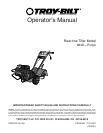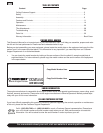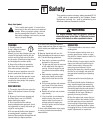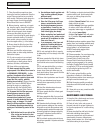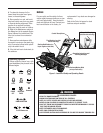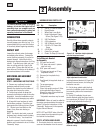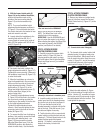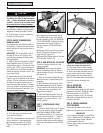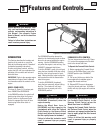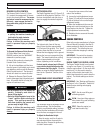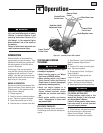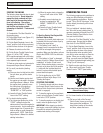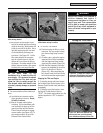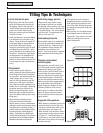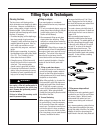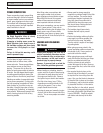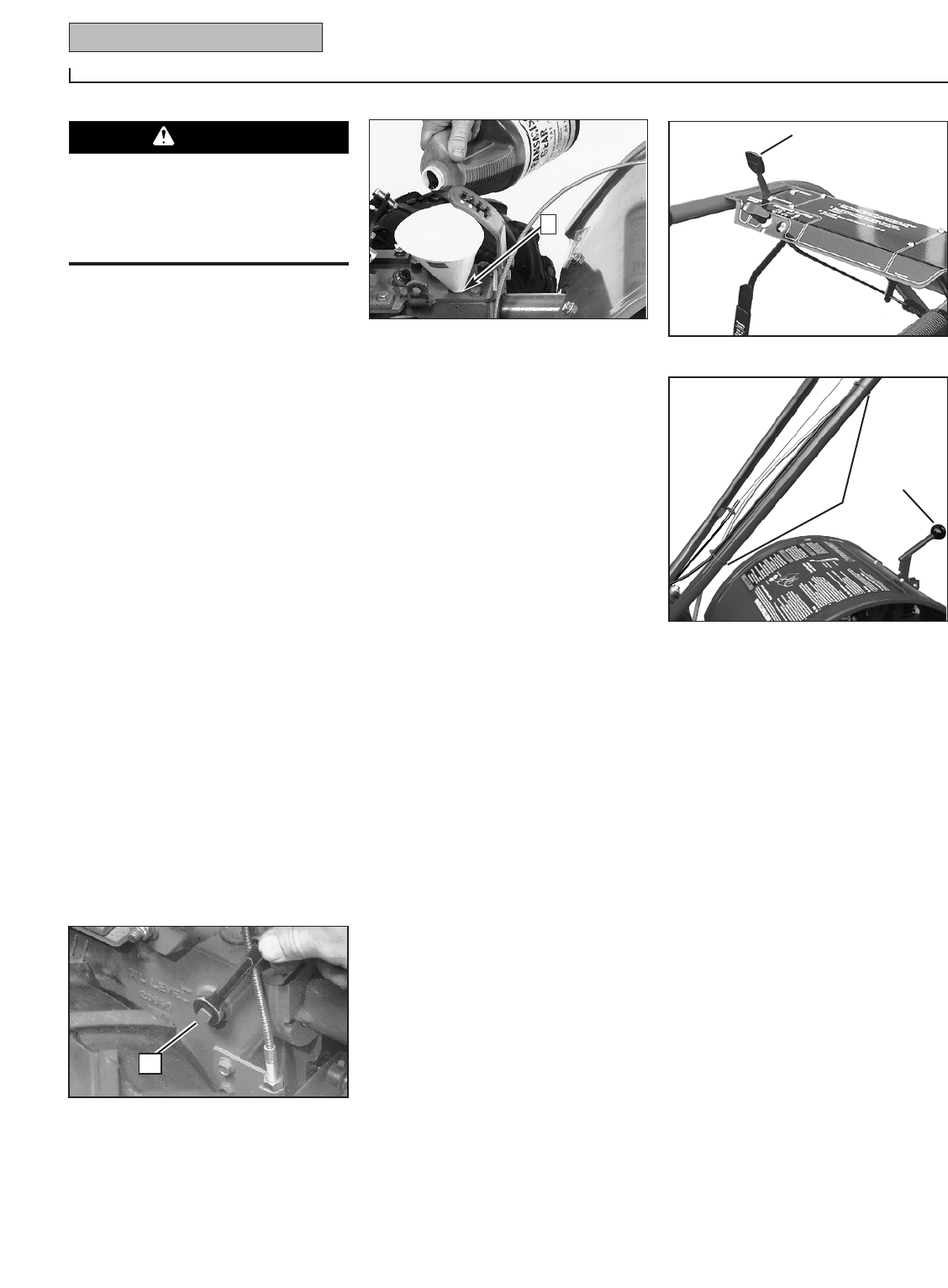
4. Check for correct spring/cable tension
as instructed in Section 5, Checking and
Adjusting Forward Clutch Belt Tension.
5. When tension is correct, tighten the
two jam nuts (B) securely.
STEP 5: CHECK TRANSMISSION
GEAR OIL LEVEL
The transmission was filled with gear oil
at the factory. However, be sure to check
the oil level at this time to make certain it
is correct.
IMPORTANT: Do not operate the tiller if
the gear oil level is low. Doing so will
result in severe damage to the transmis-
sion components.
1. With the tiller on level ground, pull the
Depth Regulator Lever (R, Figure 2-13)
back and then slide it to the second notch
from the top. NOTE: If the lever does not
move, lift the tine hood flap and look for a
plastic tie securing the lever in place. Cut
and remove the tie.
2. Remove the oil level check plug (M,
Figure 2-10) on the left-side of the trans-
mission. (Due to dried paint on the plug
threads, it may require some force to
remove the plug the first time.) The gear
oil level is correct if oil starts to flow out
of the hole as the plug is removed. If so,
securely reinstall the plug.
3. If oil does not flow from the check
hole, add oil as follows:
NOTE: Do not use automatic transmission
fluid or motor oil in the transmission.
(a) Clean area around the fill hole (N,
Figure 2-11) and unscrew gear oil fill
plug.
(b) If adding only a few ounces of gear
oil, use API rated GL-4 or GL-5 gear oil
having a viscosity of SAE 140, SAE 85W-
140 or SAE 80W-90. If refilling an empty
transmission, use only GL-4 gear oil
having a viscosity of SAE 85W-140 or
SAE 140.
(c) Using a clean funnel, slowly add gear
oil until it flows from the gear oil level
check hole (N, Figure 2-11).
(d) Reinstall and tighten securely the gear
oil fill plug (M, Figure 2-10).
STEP 6: ADD MOTOR OIL TO ENGINE
The tiller is shipped without oil in the
engine crankcase.
IMPORTANT: Do not start the engine
without first adding motor oil. Severe
engine damage will result if the engine is
run without oil.
1. Refer to the separate Engine Owner’s
Manual for motor oil specifications and
capacities.
2. With the unit on level ground, move
the Depth Regulator Lever (R, Figure 2-
13) up or down until the engine is level.
3. Add motor oil as described in the
Engine Owner’s Manual.
4. Move the Depth Regulator Lever all
the way down until the highest notch is
engaged. This places the tines in the
“travel” position.
STEP 7: ATTACH WHEEL GEAR
LEVER
1. Insert the Wheel Gear Lever (P, Figure
2-12) up through the slot in the control
panel that is labeled “WHEEL GEAR.”
2. Insert two #10-32 x 1/2" round head
screws down through the “+” marks on
the control panel decal and securely
attach the wheel gear mounting bracket
using two #10 lockwashers and #10-32
nuts.
3. Use a small board to tap the Wheel
Gear Lever knob securely onto the lever.
4. Secure the wheel gear cable and the
reverse clutch control cable to the left-
side handlebar with two plastic ties (S,
Figure 2-13) located about two feet apart.
Snip off any excess tie length with
scissors.
STEP 8: CHECK AIR
PRESSURE IN TIRES
Use a tire pressure gauge to check the air
pressure in both tires. Deflate or inflate
both tires equally to 15-to-20 PSI
(pounds per square inch). Be sure that
both tires are inflated equally or the unit
will pull to one side.
STEP 9: CHECK HARDWARE
FOR TIGHTNESS
Inspect the hardware on the unit and
tighten any loose screws, bolts and nuts.
IMPORTANT:
• This completes assembly for recoil start
tillers. Read the rest of this Manual, and
the separate Engine Owner’s Manual,
before operating the tiller.
• Electric start models--continue with the
Assembly Steps.
Figure 2-10: Gear oil level check plug.
8 Section 2: Assembly
Figure 2-11: Adding gear oil.
Figure 2-13: Attach wheel gear cable and
reverse clutch cable with cable ties (S).
Figure 2-12: Attach Wheel Gear Lever.
S
R
P
N
M
Incorrect cable adjustment could cause
the wheels and tines to rotate unexpect-
edly. Follow adjustment procedures
carefully. Failure to do so could result
in personal injury or property damage.
CAUTION



